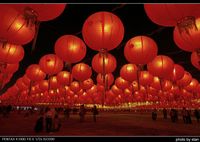A friend loaned me an interesting book called Suburban Nation: The Rise of Sprawl and the Decline of the American Dream by Andres Duany, et al. It advocates going back to city planning similar to America's initial development, where zoning was highly integrated and arose from the organic demands of citizens. These places are more aesthetic, pedestrian friendly, and living efficient than the current model of single-use zones, which necessitates automobile use, results in traffic congestion and unimaginative landscapes, and perpetuates a system of suburban sprawl. Already at a point where we are past peak oil production, I hope that city planning will turn back to high-density housing (versus the single family home) and organic systems that allow residents to work, eat, play, shop, and live all within a five minute walk.
Just a couple of fun things from the book:
An interesting quote from Zev Cohen during a lecture in 1995: "People say they do not want to live near where they work, but that they would like to work near where they live." Apparently contradictory, I think this statement is both a paradox that shows how perspective influences our desires and revelatory of a human desire to put home over work. We want to have work spaces that are conveniently close to where we have our homes and live our lives, but don't want to be ushered into living spaces because of the demands and proximity of work.
Naming suburbs: I've always found it interesting how suburban developments and streets are romantically named after elements of wilderness, often the same ones that the developments replace. You have "Lookout Glen" or "Eagle's Nest Lane" or something of the sort, and everything looks like the same damn suburb. I've never seen an Eagle's Nest or been to a glen with a stunning lookout (okay, maybe I have, but not in the suburbs), but you can read the names all over the place.
The book pointed out a really interestingly named suburban housing community which reflects its own identity confusion. Symbolic of how a suburb can't even make sense of itself, heads or tails for a front or back, a part of Atlanta calls itself "Perimeter Center". I managed a smile at that one; this place hasn't the foggiest about what it really looks like.
Subscribe to:
Post Comments (Atom)
.jpg)



1 comment:
yea, this book is quite a revealing look into how we choose to fashion the landscape
Post a Comment